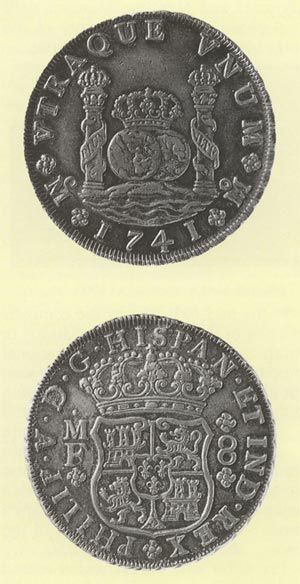A Fistful of Dollars

Silver 8-reales, or 'Pillar Dollar', Mexico, 1741.
While the Museum's numismatic (coin) collections contain mostly coins from Britain, it also includes representative groups of overseas coins, which helps put the evolution of British coinage in its international context.
The dollar, today one of the world's dominant currencies, has its origins late in the 15th century. New discoveries of silver and developments in mining technology increased European output of the metal dramatically and central European states started producing large coins in silver which were equal in value to the gold coins of the day.
The name 'dollar' derives from the St Joachimsthaler Guldengroschen struck by the counts of Slik in Central Europe around 1520. As 'Thaler' became the generic name for crown-sized silver coins of the German states, the English term 'dollar' had started to appear by the early 17th century.
The enormous numbers of Spanish dollars produced in their colonies of Mexico and South America ('pieces of eight') came to be traded all over the world, and they set the standard for the silver currencies of many emerging nations in the 18th and 19th centuries.